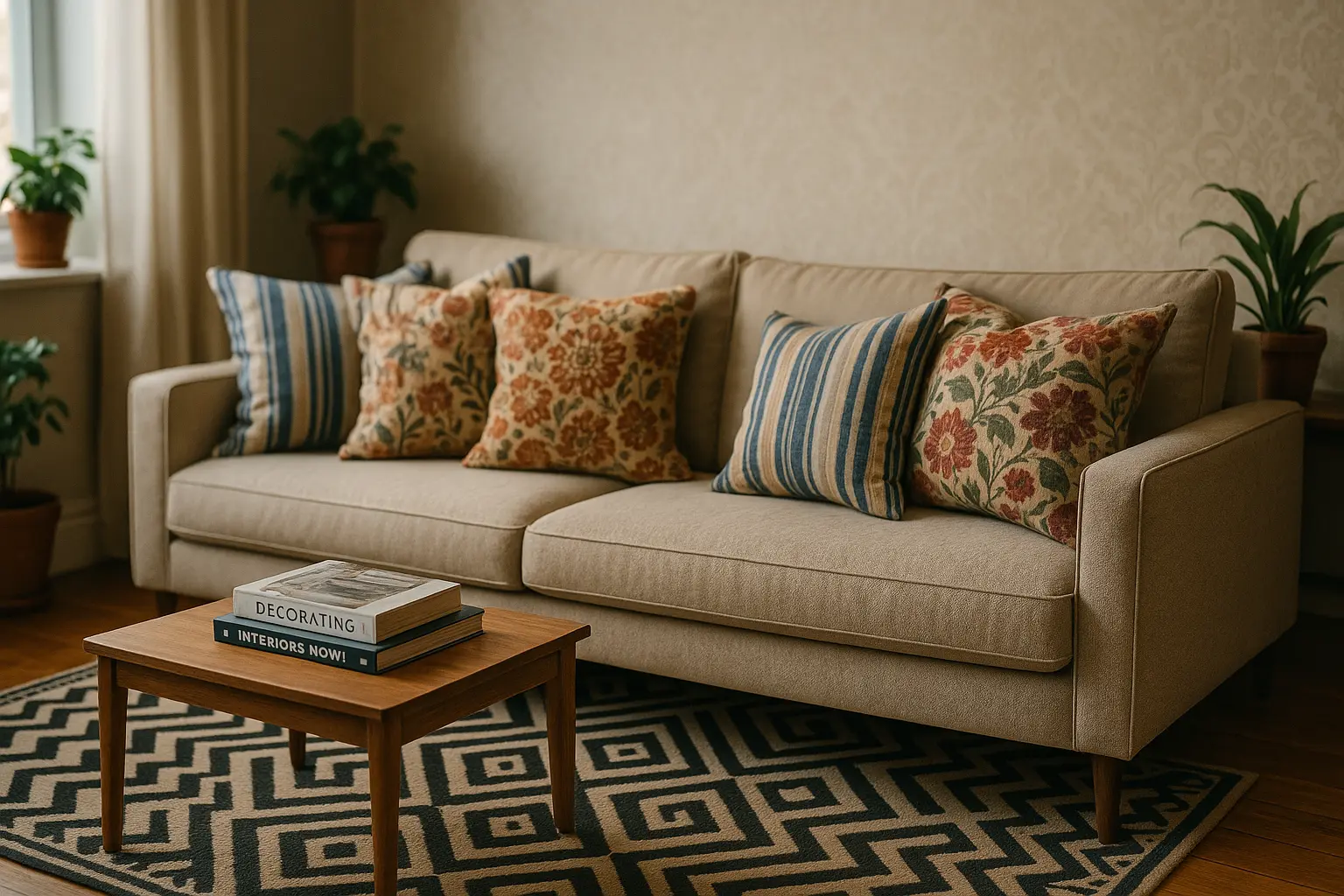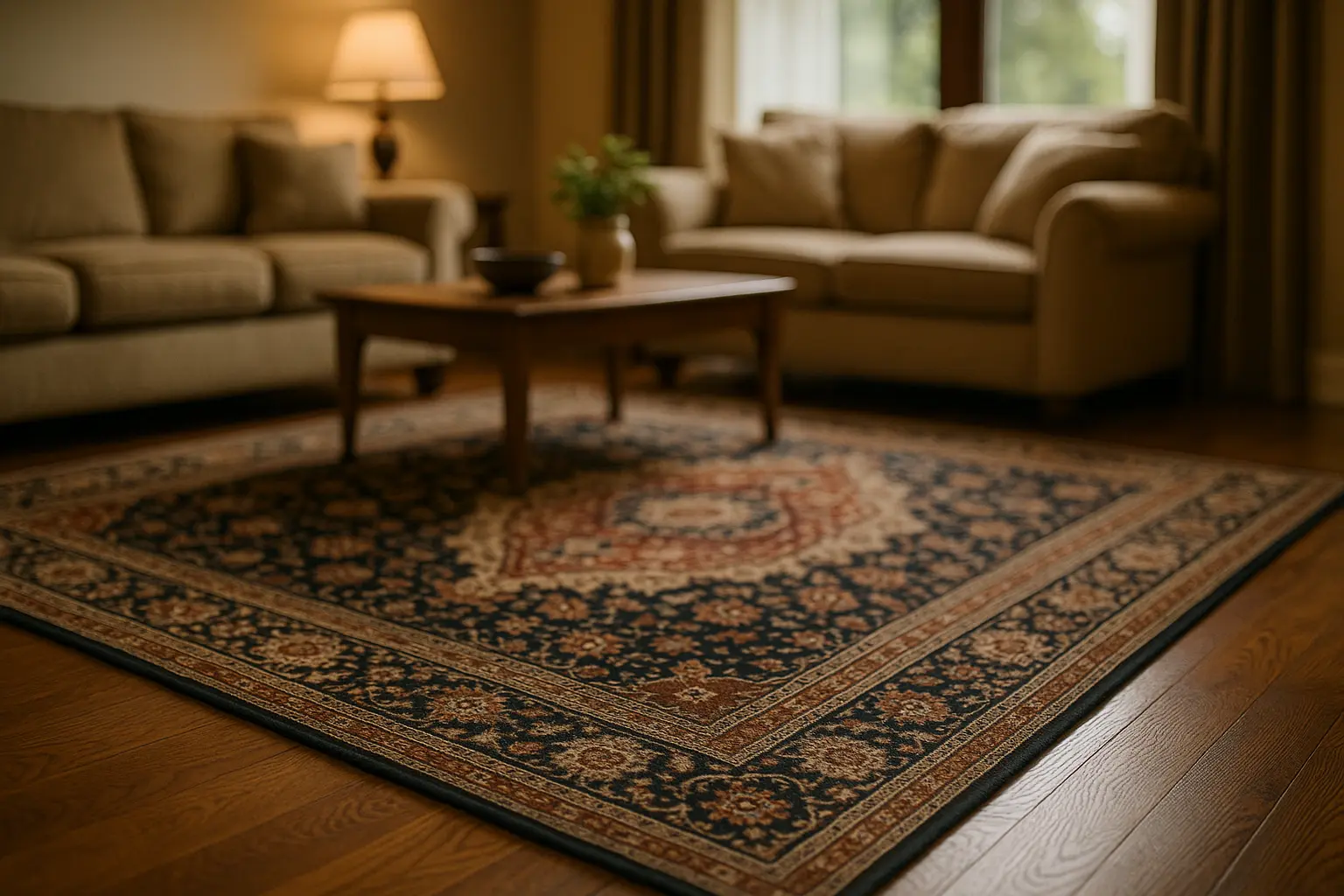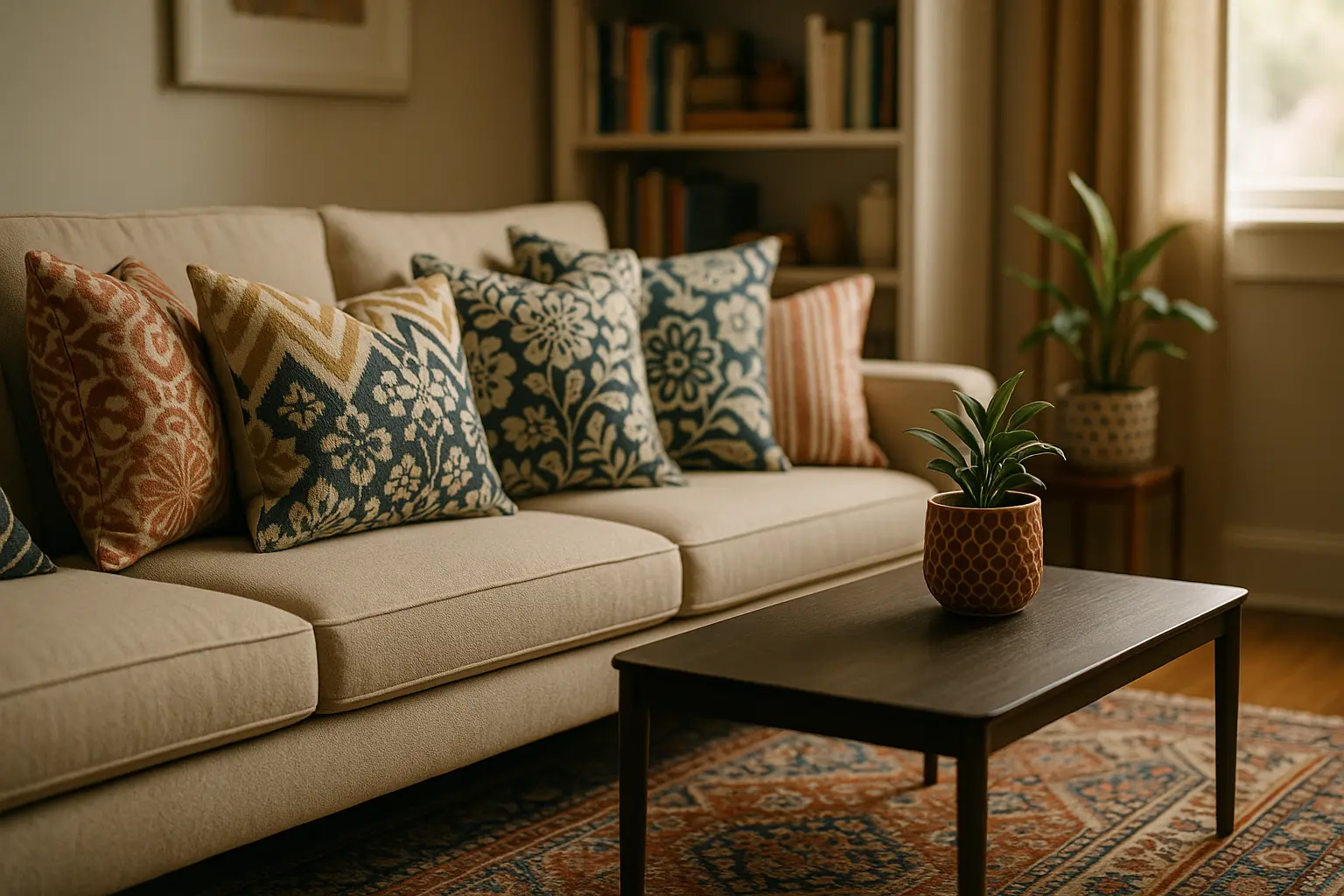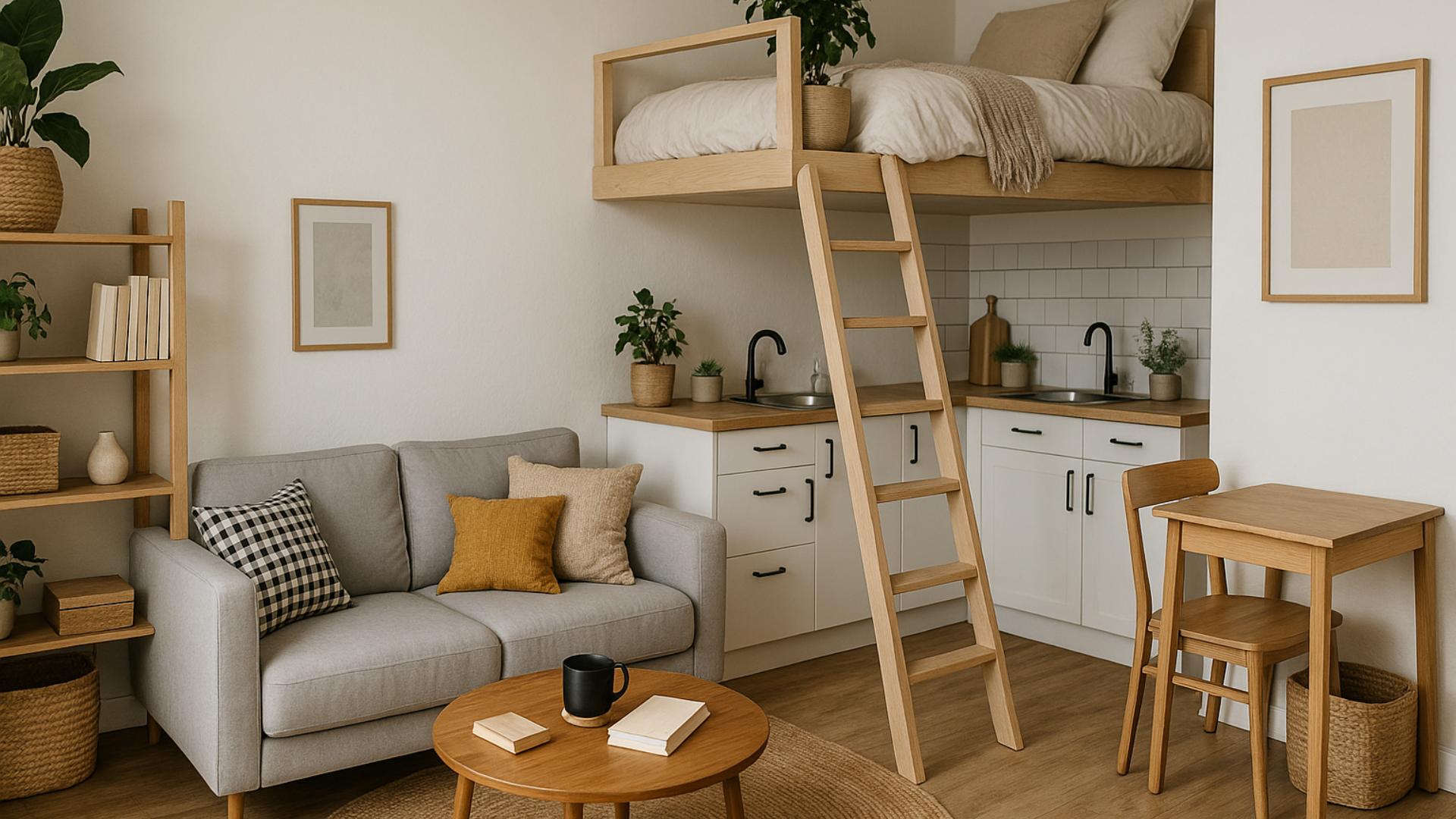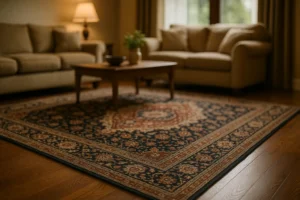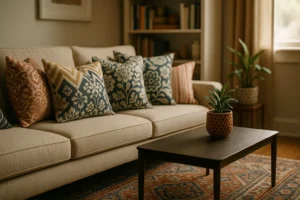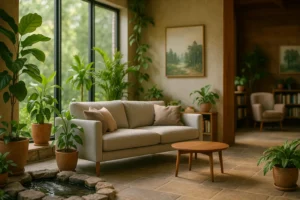Mixing Patterns: Simple Do’s and Don’ts
Welcome to the World of Patterns
Patterns are everywhere, from the clothes we wear to the spaces we inhabit. Our affinity for patterns and colors is deeply rooted in our desire for aesthetic pleasure and visual interest. Yet, for many, the art of mixing patterns can seem daunting. How do we combine prints without clashing? Can we truly blend textures and colors to create harmony in a room or our outfits? Today, let’s embark on a journey to explore these questions and unravel the mysteries of patterns, providing you with a cool, confident approach to this delightful design challenge.
Understanding the Basics of Pattern Mixing
Diving Into the Pattern Palette
When we talk about mixing patterns, we refer to the exciting interplay between various prints—from stripes to florals, checks to polka dots. At first glance, this might seem overwhelming, but by understanding a few key principles, we can begin to create balanced and beautiful combinations.
The Foundation of Mixing
The first step to successful pattern mixing is understanding the role of color. An effective technique is to start with a base color that acts as a unifying element. This color should be present in all your selected patterns, creating a cohesive backdrop that allows each print to shine without overpowering the rest.
Scale and Proportion
Another consideration is the scale and proportion of the patterns. Mixing large-scale prints with smaller, more delicate ones adds depth and dimension to the overall design. Imagine a bold geometric print paired with a delicate floral—this contrast creates visual interest and prevents the patterns from competing for attention.
The Power of Neutrals
Incorporating neutral tones can also serve as a counterbalance, providing a resting space for the eye and allowing the patterns to breathe. Neutral colors like beige, white, and grey act as visual anchors, ensuring that bolder patterns don’t overwhelm the overall look.
Creating Harmony in Your Living Spaces
Elevate Your Room’s Design with Patterns
Our home is a reflection of our personality, and mixing patterns in our spaces can add a touch of contemporary flair while maintaining a warm ambiance. But how do we achieve this delicate balance?
Layering for Depth and Interest
To create a visually engaging space, we need to think about layers. Start with a foundation piece, such as a rug with a subtle geometric design. From there, add additional layers through cushions, throws, and curtains, each with their unique pattern yet tied together by a common color palette. This approach allows us to add texture and depth without overwhelming the room.
Furniture and Accent Pieces
Furniture plays a crucial role in establishing the pattern dynamics of a room. Striped armchairs, polka dot cushions, and floral lampshades can coexist beautifully when unified by shared tones. A simple way to incorporate multiple patterns is through accent pieces which can be easily swapped out, allowing for seasonal updates and maintaining a fresh, vibrant look.
Avoiding Visual Overload
While patterns are exciting, it’s vital to balance them with solid-colored elements. A blank wall or a solid sofa can provide a calming backdrop, ensuring that the room doesn’t feel cluttered. Employing such strategies helps maintain a sense of order and harmony within the space.
Fashion: Mastering the Art of Patterns in Outfits
Crafting Your Signature Look with Patterns
In the realm of fashion, mixing patterns can transform an ordinary outfit into a chic statement. However, achieving the perfect blend requires a strategic approach.
Building the Base
The key to mixing patterns in fashion lies in a solid foundation. Start with a versatile piece, such as a softly textured stripe shirt, which acts as the base. From here, layer on complementary patterns, keeping a keen eye on the color palette. For instance, pairing a monochrome checkered skirt with a subtle floral scarf can add character without overwhelming the senses.
The Importance of Scale
When mixing patterns within an outfit, scale is paramount. Combine a bold, large-scale print with a more subdued, smaller one for balance. This ensures that your ensemble remains cohesive rather than chaotic. Consider the juxtaposition of a polka dot tie against a pinstripe blazer—a sophisticated pairing that exudes confidence and style.
Accessorize with Intent
Accessories offer a fantastic opportunity to experiment with patterns. A striped handbag or a floral brooch can infuse personality into your outfit, enabling you to test patterns without committing to an entirely patterned ensemble. This approach invites creativity while maintaining a polished appearance.
The Do’s and Don’ts of Pattern Mixing
Guidelines for Seamless Pattern Integration
Though mixing patterns is an art, some logical guidelines can help us navigate this vibrant world with ease. Let’s explore some essential do’s and don’ts.
The Do’s
- Do embrace contrasts: Distinct patterns can coexist harmoniously if they share a common color or motif.
- Do consider texture: Mixing different textures adds a layer of sophistication to any outfit or room.
- Do use neutrals: Neutral colors balance out bold patterns, ensuring they don’t overpower the space or ensemble.
- Do play with scale: A balance of large and small patterns creates visual harmony and avoids overwhelming the eye.
The Don’ts
- Don’t overcrowd: Too many patterns can create visual chaos—focus on a few key elements to maintain balance.
- Don’t ignore color cohesion: Ensure that the colors in your patterns work together, not against each other.
- Don’t neglect the setting: Consider the context—some occasions call for subtlety, while others welcome bold statements.
- Don’t forget the basics: Remember the foundational elements of design—scale, color, and proportion.
Embrace Your Inner Designer
Mixing patterns is more than a design challenge; it’s a journey of self-expression and creativity. By following these guidelines and embracing our unique style, we can craft spaces and outfits that resonate with our personalities and preferences.
Remember, at the heart of pattern mixing is a playful yet thoughtful approach. It’s about finding that sweet spot where patterns complement rather than compete, where colors and textures blend seamlessly to create a harmonious visual symphony. Let’s embark on this creative adventure with confidence and flair, knowing that every choice reflects a part of who we are.
FAQ
What are some basic guidelines for mixing patterns in an outfit?
To successfully mix patterns, start by choosing one dominant pattern and one or two supporting patterns. Ensure that the colors within the patterns are harmonious, and vary the scale of the patterns for visual interest.
Is there a rule of thumb when it comes to pattern sizes?
Yes, combining different scale patterns can create a balanced look. Pairing a large-scale pattern with a smaller, more subtle pattern allows each to stand out without overwhelming the entire outfit.
How can I ensure the patterns in my outfit don’t clash?
Stick to a cohesive color palette to avoid clashing. Select patterns that share at least one color, creating unity within the outfit. Also, consider the style and formality of the patterns to ensure they complement each other.
What are some patterns that are generally easy to mix together?
Classic patterns such as stripes, polka dots, and plaid are often versatile and mix well with others. These patterns can serve as a neutral base when paired with more intricate or bold designs.
Are there any patterns that should generally be avoided when mixing?
While personal style is subjective, mixing too many bold, intricate patterns can be overwhelming. It’s usually best to avoid combining patterns that are overly busy or have similar sizes, as they can compete for attention and create a chaotic look.
